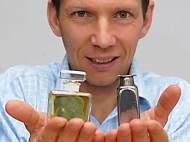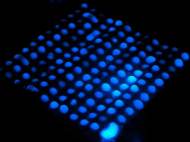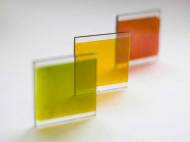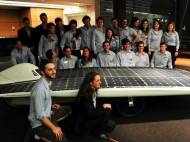Top 5 articles regarding technology in 2011
 Aside various breakthroughs in solar power harvesting efficiency, there were breakthroughs in production and design of solar panels. We reported new breakthroughs in medical and dental technology, and there have been many breakthroughs in the field of nanotechnology, as well as in the material sciences. Among other technology trends, there are efforts to create 3D chips and better waste recycling.
Aside various breakthroughs in solar power harvesting efficiency, there were breakthroughs in production and design of solar panels. We reported new breakthroughs in medical and dental technology, and there have been many breakthroughs in the field of nanotechnology, as well as in the material sciences. Among other technology trends, there are efforts to create 3D chips and better waste recycling.
These are the top 5 technology articles and news we published in 2011 (according to our visitors):
5. Bulk metallic glasses material is strong as steel and moldable as plastic
 A team of researchers from Yale University came up with a substance which could be molded into complex shapes with the same ease and low expense as plastic but without sacrificing the strength and durability of metal. The Bulk Metallic Glasses (BMGs)-metal alloys with randomly arranged atoms can be blow molded like plastics into complex shapes that can’t be achieved using regular metal, yet without sacrificing the strength or durability that metal affords.
A team of researchers from Yale University came up with a substance which could be molded into complex shapes with the same ease and low expense as plastic but without sacrificing the strength and durability of metal. The Bulk Metallic Glasses (BMGs)-metal alloys with randomly arranged atoms can be blow molded like plastics into complex shapes that can’t be achieved using regular metal, yet without sacrificing the strength or durability that metal affords.
The team blow molded the alloys at low temperatures and low pressures, where the bulk metallic glass dramatically softens and flows as easily as plastic but without crystallizing like regular metal. The low temperatures and low pressures allowed the team to shape the BMGs with ease, versatility and precision. In order to carefully control and maintain the ideal temperature for blow molding, the team shaped the BMGs in a vacuum or in fluid.
4. Cheap and disposable paper strips could be used for chemical analysis
 The researchers from Perdue University have invented a technique that uses inexpensive paper to produce micro-fluidic devices for rapid medical diagnostics and chemical analysis. The testing platform can be etched on a disposable paper strip containing patterns created by a laser, thus enabling inexpensive paper-based systems that are able to do multiple analyses on the same piece of paper.
The researchers from Perdue University have invented a technique that uses inexpensive paper to produce micro-fluidic devices for rapid medical diagnostics and chemical analysis. The testing platform can be etched on a disposable paper strip containing patterns created by a laser, thus enabling inexpensive paper-based systems that are able to do multiple analyses on the same piece of paper.
The researchers start with paper having a hydrophobic (water-repellant) coating, such as parchment paper or wax paper used for cooking. A laser is used to burn off the hydrophobic coatings in lines, dots and patterns, exposing the underlying water-absorbing paper only where the patterns are formed.
3. Affordable and environmentally friendly solar cells from Oxford PV
 Oxford Photovoltaics (Oxford PV), formed with the help of Isis Innovation, Oxford University’s technology transfer company, has combined earlier research on artificial photosynthetic electrochemical solar cells and semiconducting plastics to create manufacturable solid-state dye sensitized solar cells. The cells can be manufactured from cheap, abundant, environmentally benign and non-corrosive materials, and be scaled to any volume.
Oxford Photovoltaics (Oxford PV), formed with the help of Isis Innovation, Oxford University’s technology transfer company, has combined earlier research on artificial photosynthetic electrochemical solar cells and semiconducting plastics to create manufacturable solid-state dye sensitized solar cells. The cells can be manufactured from cheap, abundant, environmentally benign and non-corrosive materials, and be scaled to any volume.
The solar cells can be printed onto glass or other surfaces, and they are available in a range of colors. That makes them ideal for new buildings where solar cells could be incorporated into glazing panels and walls. Oxford PV’s technology replaces the liquid electrolyte with a solid organic semiconductor, enabling entire solar modules to be screen printed onto glass or other surfaces. Green is the most efficient “semi-transparent” color for producing electricity, although red and purple also work well.
2. Sunswift IVy sets the world record for the fastest solar car
 University of New South Wales (UNSW) Sunswift solar car has been developed for nearly 15 years, and its Sunswift IVy version managed to set a new Guinness World Record as the world’s fastest vehicle powered by the sun. The car smashed the world solar car speed record at the HMAS Albatross navy base airstrip in Nowra, traveling at an average speed of 88km/h (almost 55 mph).
University of New South Wales (UNSW) Sunswift solar car has been developed for nearly 15 years, and its Sunswift IVy version managed to set a new Guinness World Record as the world’s fastest vehicle powered by the sun. The car smashed the world solar car speed record at the HMAS Albatross navy base airstrip in Nowra, traveling at an average speed of 88km/h (almost 55 mph).
The speed was significantly faster than the previous record of 79km/h (49 mph). The record was set for cars that are powered exclusively by silicon solar cells. Although Sunswift IVy normally uses its cells to charge a 25kg (bit more than 55 pounds) battery to operate, the battery was removed for the record attempt.
1. Skin cell gun sprays stem cells for fast recovery from serious burns
 Spray-on skin that could help you heal your skin within several days after a serious burn seems as something we used to see in science fiction, but that technology has been developed worldwide for over 5 years. Compared to other currently available skin regeneration or replacement methods, this method shortens the time needed for generation of replacement skin, time needed for rehabilitation, and it is more affordable.
Spray-on skin that could help you heal your skin within several days after a serious burn seems as something we used to see in science fiction, but that technology has been developed worldwide for over 5 years. Compared to other currently available skin regeneration or replacement methods, this method shortens the time needed for generation of replacement skin, time needed for rehabilitation, and it is more affordable.
Instead growing sheets of skin for a period which can last over a month, this approach uses stem cells which are harvested from a small patch of healthy skin from the victim or a donor. Afterwards, it is put into a solution and sprayed back on to the affected area. According to Dr Jörg Gerlach from the University of Pittsburgh’s McGowan Institute for Regenerative Medicine, the whole process takes only 90 minutes and the burns can heal within four days. It eliminates a major flaw of existing burns treatment, the time taken to grow new layers of skin in the lab, during which time patients can die from infection.









Leave your response!